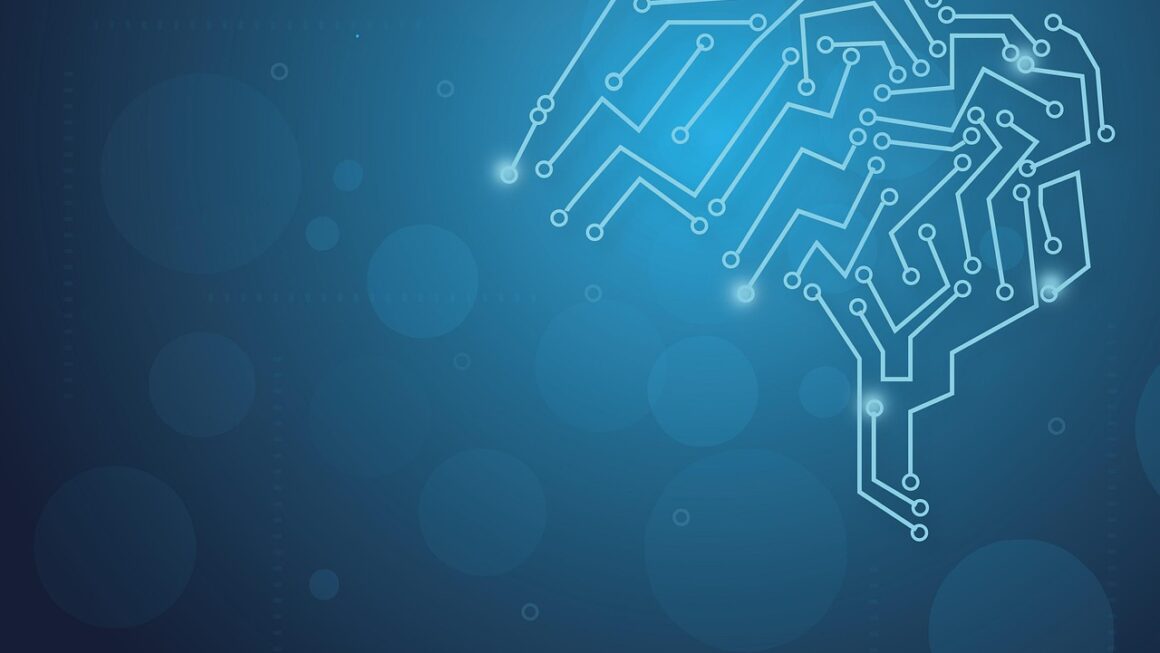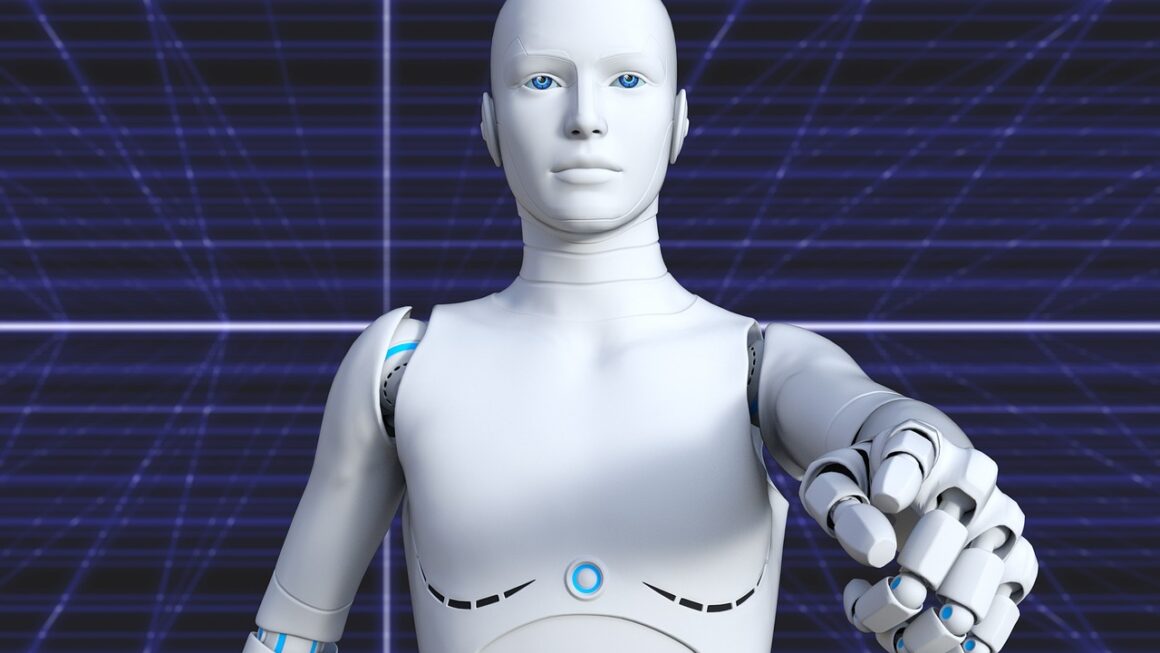Machine learning has rapidly evolved from a futuristic concept to a powerful tool shaping industries worldwide. From personalized recommendations on your favorite streaming platform to fraud detection systems protecting your finances, machine learning algorithms are quietly working behind the scenes, impacting our daily lives in profound ways. This blog post aims to provide a comprehensive overview of machine learning, exploring its core concepts, applications, and future trends.
What is Machine Learning?
Defining Machine Learning
Machine learning (ML) is a subset of artificial intelligence (AI) that focuses on enabling computer systems to learn from data without explicit programming. Instead of being explicitly instructed on how to perform a task, machine learning algorithms identify patterns, make predictions, and improve their performance over time through experience, i.e., data.
- Unlike traditional programming, where rules are manually defined, machine learning algorithms learn the rules themselves.
- The goal of machine learning is to develop models that can generalize well to new, unseen data.
- Machine learning algorithms are data-driven, meaning that the quality and quantity of data significantly impact their performance.
Types of Machine Learning
Machine learning algorithms can be broadly categorized into three main types:
- Supervised Learning: This type of learning involves training a model on labeled data, where the desired output is known. The algorithm learns to map inputs to outputs and can then be used to predict the output for new, unseen inputs.
Examples: Image classification (identifying objects in images), regression (predicting housing prices), and spam detection (classifying emails as spam or not spam).
- Unsupervised Learning: This type of learning involves training a model on unlabeled data, where the desired output is not known. The algorithm learns to find patterns and structures in the data without any prior guidance.
Examples: Clustering (grouping customers based on their purchasing behavior), dimensionality reduction (reducing the number of variables in a dataset), and anomaly detection (identifying unusual data points).
- Reinforcement Learning: This type of learning involves training an agent to make decisions in an environment to maximize a reward. The agent learns through trial and error, receiving feedback in the form of rewards or penalties for its actions.
* Examples: Training robots to perform tasks, developing game-playing AI, and optimizing resource allocation.
Key Machine Learning Algorithms
Supervised Learning Algorithms
- Linear Regression: A simple and widely used algorithm for predicting a continuous output variable based on one or more input variables. For example, predicting the price of a house based on its size and location.
- Logistic Regression: An algorithm for predicting a categorical output variable based on one or more input variables. For example, predicting whether a customer will click on an advertisement or not.
- Support Vector Machines (SVM): A powerful algorithm for classification and regression that aims to find the optimal hyperplane that separates different classes of data. Used in image recognition and bioinformatics.
- Decision Trees: A tree-like structure that uses a series of decisions to classify or predict an outcome. Easy to interpret and visualize. Used in credit risk assessment.
- Random Forest: An ensemble learning method that combines multiple decision trees to improve accuracy and reduce overfitting. Provides more robust results than a single decision tree.
- Neural Networks: Complex algorithms inspired by the structure of the human brain, used for a wide range of tasks, including image recognition, natural language processing, and speech recognition. Deep learning models are a type of neural network with many layers.
Unsupervised Learning Algorithms
- K-Means Clustering: An algorithm that partitions data into K clusters, where each data point belongs to the cluster with the nearest mean (centroid). Used in customer segmentation and image compression.
- Hierarchical Clustering: An algorithm that builds a hierarchy of clusters, either by starting with individual data points and merging them into larger clusters (agglomerative) or by starting with a single cluster and splitting it into smaller clusters (divisive).
- Principal Component Analysis (PCA): A dimensionality reduction technique that identifies the principal components of a dataset, which are the directions of maximum variance. Reduces the number of features while preserving essential information. Used in image processing and data visualization.
- Association Rule Mining: An algorithm that discovers interesting relationships between variables in large datasets. For example, identifying which products are frequently purchased together in a supermarket.
Applications of Machine Learning Across Industries
Machine learning is revolutionizing numerous industries by enabling automation, improving decision-making, and creating new opportunities. Here are a few examples:
Healthcare
- Disease Diagnosis: Machine learning algorithms can analyze medical images, patient data, and genetic information to diagnose diseases earlier and more accurately.
- Drug Discovery: Machine learning can accelerate the drug discovery process by predicting the efficacy and safety of potential drug candidates.
- Personalized Medicine: Machine learning can tailor treatment plans to individual patients based on their unique characteristics.
- Example: IBM Watson Health uses machine learning to analyze medical records and provide insights to doctors.
Finance
- Fraud Detection: Machine learning algorithms can identify fraudulent transactions and prevent financial losses.
- Risk Management: Machine learning can assess credit risk and predict loan defaults.
- Algorithmic Trading: Machine learning can automate trading strategies and improve investment returns.
- Example: Banks use machine learning to detect suspicious transactions and prevent money laundering.
Retail
- Personalized Recommendations: Machine learning algorithms can recommend products to customers based on their browsing history and purchase behavior.
- Inventory Management: Machine learning can optimize inventory levels and reduce waste.
- Customer Segmentation: Machine learning can group customers based on their demographics, interests, and purchasing behavior.
- Example: Amazon uses machine learning to recommend products and personalize the shopping experience.
Manufacturing
- Predictive Maintenance: Machine learning can predict when equipment is likely to fail and schedule maintenance proactively.
- Quality Control: Machine learning can detect defects in products and improve manufacturing processes.
- Robotics: Machine learning can enable robots to perform complex tasks and adapt to changing environments.
- Example: Manufacturers use machine learning to predict equipment failures and optimize production processes.
Challenges and Future Trends in Machine Learning
Challenges
- Data Quality and Availability: Machine learning algorithms require large amounts of high-quality data to perform well. Lack of sufficient or clean data is a common obstacle.
- Overfitting: Machine learning models can sometimes learn the training data too well, leading to poor performance on new data.
- Interpretability: Some machine learning models, such as deep neural networks, can be difficult to interpret, making it challenging to understand why they make certain predictions. This is critical in sensitive applications.
- Bias: Machine learning models can inherit biases from the data they are trained on, leading to unfair or discriminatory outcomes.
- Ethical Concerns: The use of machine learning raises ethical concerns about privacy, security, and accountability.
Future Trends
- Explainable AI (XAI): Focus on developing machine learning models that are more transparent and interpretable.
- Federated Learning: Training machine learning models on decentralized data, such as data stored on mobile devices, without sharing the data directly.
- AutoML: Automating the process of building and deploying machine learning models.
- Edge Computing: Deploying machine learning models on edge devices, such as smartphones and sensors, to enable real-time processing and reduce latency.
- Generative AI: Developing models that can generate new content, such as images, text, and music. Generative adversarial networks (GANs) are a key technology in this area.
Conclusion
Machine learning is a rapidly evolving field with the potential to transform industries and improve our lives. By understanding the core concepts, algorithms, and applications of machine learning, we can harness its power to solve complex problems and create new opportunities. While challenges remain, the future of machine learning is bright, with ongoing research and development pushing the boundaries of what is possible. As the amount of data grows exponentially and computational power increases, machine learning will continue to play an increasingly important role in shaping the world around us. Keep exploring, experimenting, and innovating with machine learning!




